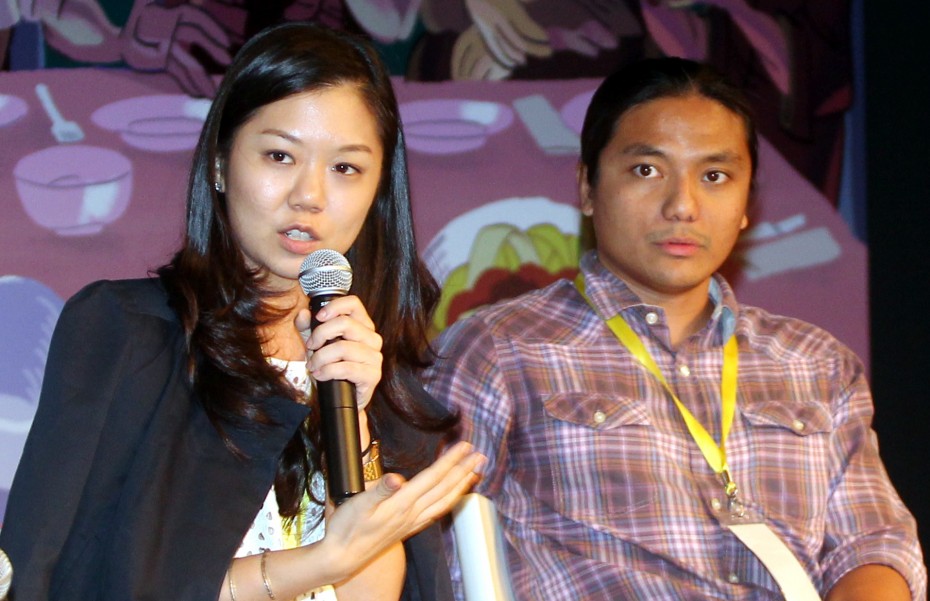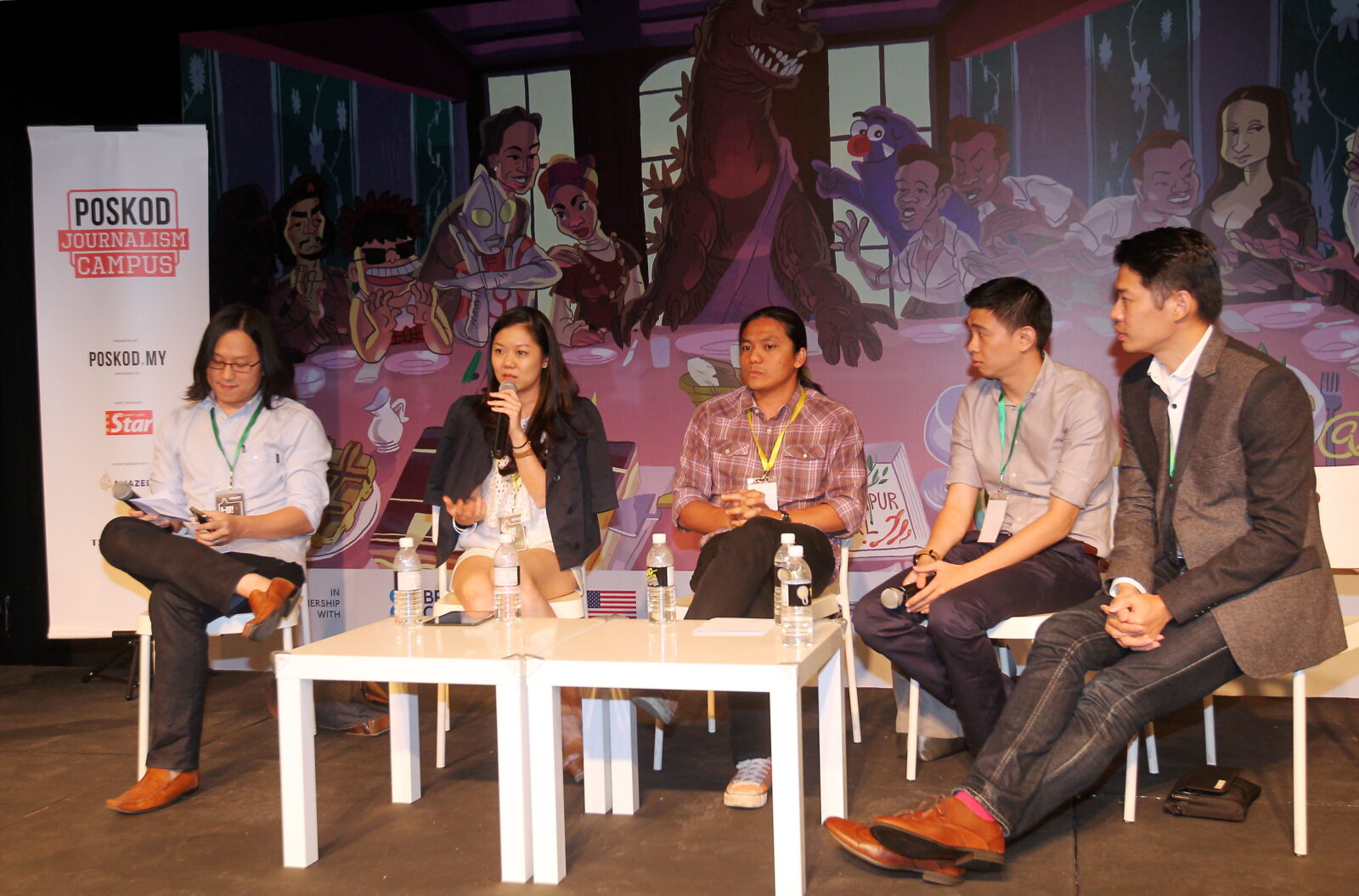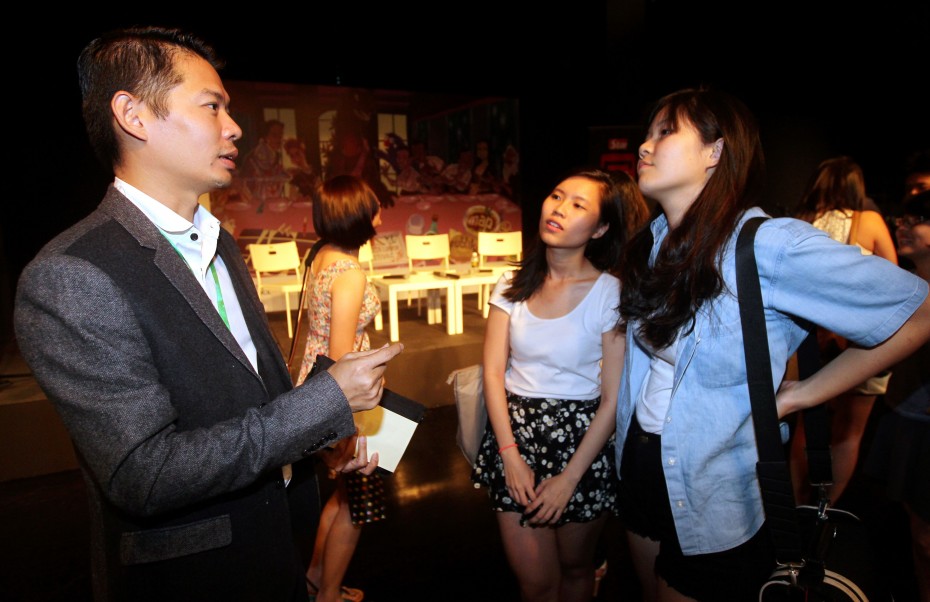
New media champions: The ‘Journalism For Gen Y’ panel discussion, presented by R.AGE, featured (left to right) R.AGE editor Ian Yee (the moderator), PopFolio Network managing director Loo Jia-Wei, Astro Awani magazine desk editor Zan Azlee, Time Out Kuala Lumpur editor Lim Chee Wah and lecturer/social media advocate Niki Cheong.
THERE was a time when journalists were the gatekeepers of news. According to lecturer/social media advocate and former journalist Niki Cheong, everyone is their own gatekeeper now.
“The way we receive news is based on an algorithm we create for ourselves,” he said. “We create and manipulate these algorithms by choosing who to follow on social media, and that dictates the news we stumble upon.”
Cheong was speaking at the “Journalism For Gen Y” panel discussion last Friday, alongside Time Out Kuala Lumpur editor Lim Chee Wah, Astro Awani magazine desk editor Zan Azlee, PopFolio Network managing director Loo Jia-Wei and R.AGE editor Ian Yee, who moderated the discussion.
Digital media has completely changed the landscape of journalism. With audiences no longer proactively looking for news content, and instead relying on what their friends share on social media, Loo said content creators now have an “obsession over virality”.
The problem with that, according to Loo, is independent voices get drowned out, and most content starts to lose authenticity. You start worrying more about going viral than producing quality content.
On top of that, Cheong said online audiences now “see headlines, not stories”. They are bombarded with information, but they rarely develop any depth of knowledge about, well, anything.
“I ask my students what is news to them, and the number one answer is ‘gossip’. They can’t even tell who the Minister of Education is!” said Cheong.
Keeping up
So how do journalists and media companies fight for space in this sea of content?
According to Loo, experimenting is crucial. Journalists now have to learn to package their content for different platforms.
“For example, 62% of Malaysians go online using their mobile devices; so it’s important you create content that caters to that,” said Loo.
Zan is one of the best examples of a journalist working across platforms, having done print, digital and broadcast journalism throughout his career.
“You need to have an overall sense of the different media platforms. That way, you can determine whether a story would work better as a video piece, a photo essay or an editorial piece,” he said.
On top of that, Zan said Gen Y audiences now prefer stories where the journalists’ personalities are apparent, as it makes it more relatable.
As Lim later said: “Readers want to read your thoughts, not your sentences”.
But at the end of the day, Lim believes journalists should always remember the importance of writing for your audience.
“The problem with young writers nowadays is they get a kick from their own writing,” he said. “As a writer, you should be writing for everyone except yourself.”
Journalism survival

Loo speaking on the media consumption habits of the Gen Y audience. ‘Click-baiting’ doesn’t necessarily have to be a bad thing, she said, as long as you ‘deliver what you promise’.
As Loo said, there are no hard and fast rules for journalists to successfully adapt to modern journalism.
“The Internet has been around for 20 years, and people are still trying to figure out the Internet and its full potential (in terms of news media),” said Zan. “That’s why people are still calling it ‘new media’.”
But with new media growing so quickly, are we witnessing the death of newspapers? Unsurprisingly, the answer was a resounding “no” from the panel.
“Newspapers were the very first mass medium. When radio and TV came along, it survived. And when the Internet came along, did radio and TV die out? No. Their focuses and roles simply evolved,” said Zan.
Despite all the changes in the media industry, Cheong is still a firm believer in the core values of journalism. “I don’t think the fundamentals of journalism have changed. What I tell my students is to converge new media technologies and strategies with traditional journalistic values.”
One perfect example of that lies in how “click-baiting” can be used by news sources. Click-baiting is the practice of creating eye-catching Internet headlines or thumbnails that compels viewers to click on them. We’re talking about headlines that end with something along the lines of “What happens next will shock you”, or “This totally made me cry”.
Loo said: “I understand the importance of journalistic integrity, but that doesn’t mean you can’t do click-baiting – you just have to do it responsibly. Always deliver what your headline promises.”



Leave a reply